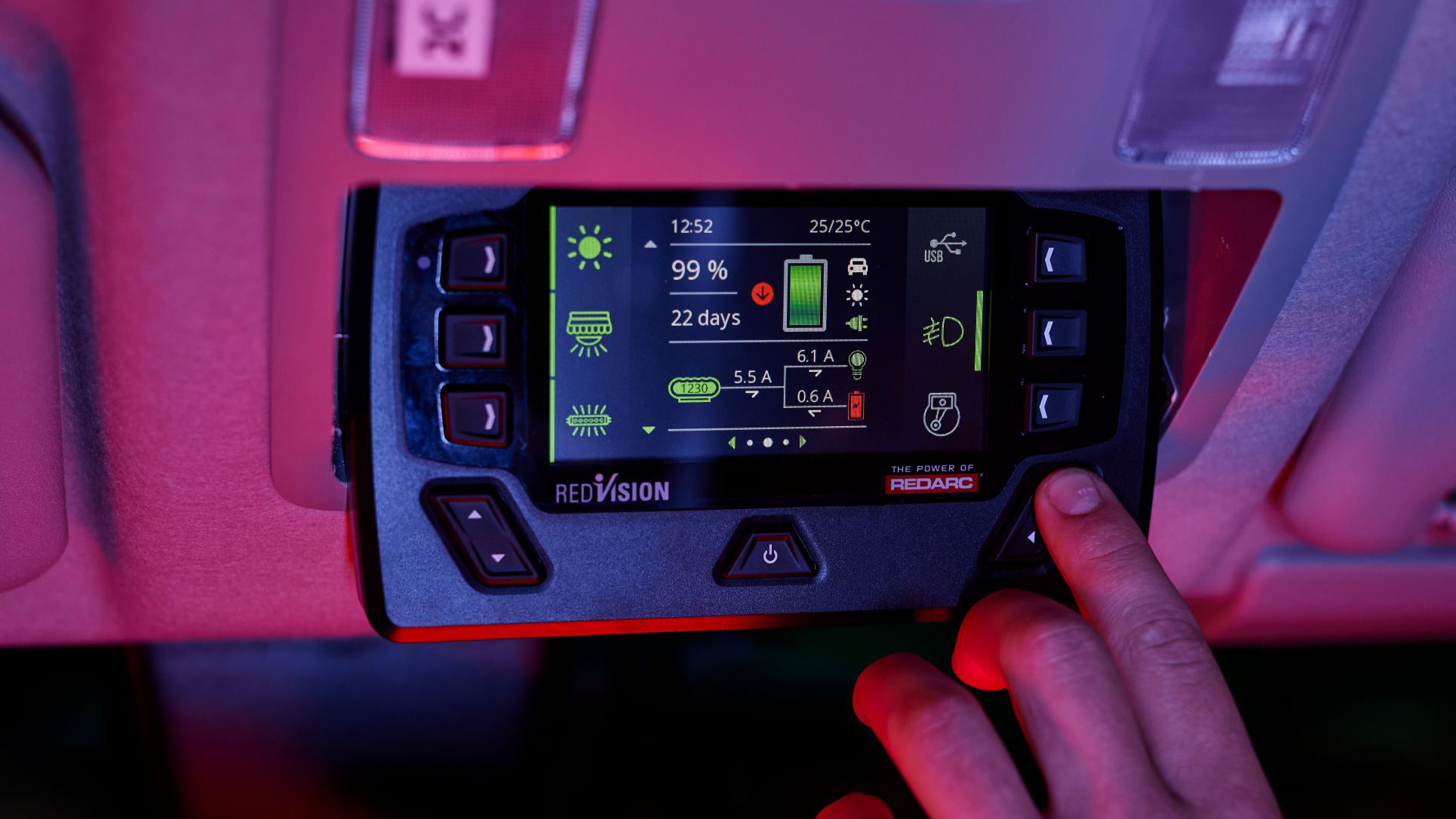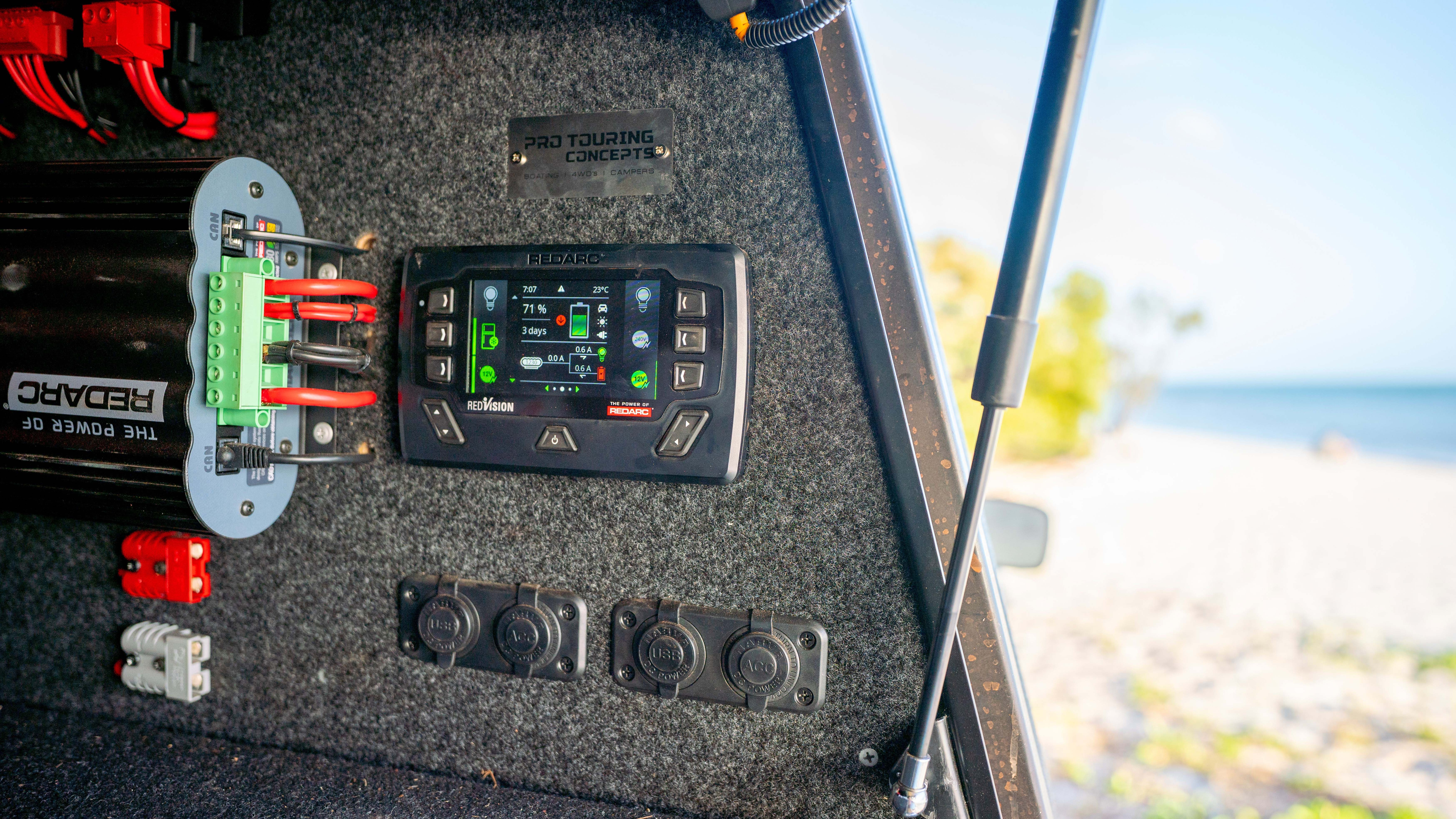When looking into setting up your 12V system, all the terms and words thrown around can get confusing. We’ve put together a little A-Z of 12V terms to hopefully make all the jargon involved in 12V gear a little clearer.
Amorphous: Amorphous is a term used for something that has no specific shape or form. Regarding solar panels, it refers to the fact that the crystal silicon structure of the solar cells is random and does not follow any recurring pattern.
Amps: Amps or Amperes is the measure of electric current. An Amp is proportional to the number of electrons passing a specific point in a circuit each second. If you think of it like a hose, current is the width of the hose and amps measures how much water passes through the hose.
Amp hours: Amp hours is a measure of stored power that is often represented by AH. Amp hours is the number of Amps drawn, multiplied by the number of hours that you draw that current. To calculate the number of Amp hours if you have the number of Amps available, use Amps x hours = AH.


Anti-reflective: With reference to solar, anti-reflective refers to the coating applied to the outside of a solar panel. It’s designed to reduce the amount of energy from the sun that is reflected off the panel. Less energy reflected means more potential energy absorbed by the panel.
Appliance: An appliance is another term for a load but is more commonly, it’s a term used when referring to everyday household devices that get plugged into power.
Battery: A battery is a combination of two or more cells made up of an electrolyte and metallic plates designed to store electrical energy. There several different types of 12V battery, for more info on choosing the perfect 12V battery for your setup see our guide to auxiliary batteries.
Charge: In a battery charge refers to the amount of electric energy stored in an object (See AH above). To charge a battery is to increase the amount of electric energy stored in it.
Charge Profile: The chemical and physical make up of a battery determines the best voltage, current, and timing method used to recharge (see recharge below) the battery. This method is referred to as a ‘Charge Profile’ and should be followed to ensure the maximum life and performance of your battery.
Circuit Breaker: A circuit breaker is an electrical switch designed to protect a circuit from damage caused by excess current. Circuit breakers function in a similar way to fuses but unlike a fuse they can be reset.
DC DC or DC to DC Charging: DC to DC charging is a method of charging your auxiliary battery by taking power from your vehicle’s alternator while the vehicle is running.
Deep Cycle: Deep cycle refers to the design and usage of a particular battery. A deep cycle battery is designed to be regularly and deeply discharged before being recharged. Due to this deep cycle batteries are perfect to be used as auxiliary batteries.
Drain: Drain is the term used to describe the loss or usage of charge in a system. Loads or appliances will drain the charge or power from a battery.
Efficiency: Efficiency is a ratio, usually expressed as a percentage, of the energy produced by something versus the energy supplied to it. With reference to solar panels, efficiency is the energy supplied by the panel vs. the energy supplied to the panel by the sun.
Fuse: Fuses are used to protect a circuit’s wiring from excessive current that could lead to damage and potential electrical fires. Fuses contain a metal element which is designed for a limited electrical current. When a short circuit or overload occurs, the higher current causes the fuse element to melt, creating a gap in the fuse which breaks the current flow in the fuse and circuit.


Interconnected: Interconnected refers to two or more devices connected to form a system working towards a common goal. With reference to solar, interconnected usually refers to solar panels connected to create a larger solar array.
Inverter: An inverter is a device designed to convert a DC voltage (12V or 24V usually) to an AC voltage. Inverters are generally used to run 110VAC appliances such as fridges and televisions in DC electrical systems such as caravans. To find out which inverter is best for your setup, check out the ins and outs of inverters.
Lithium or LiFePO4: A type of battery chemistry. Lithium batteries have a much higher energy density, meaning they're able to be discharged much lower than other battery types without effecting the lifespan of the battery. For more information on lithium batteries check out our guide to lithium.
Load: With reference to electronics, a load is any device connected to an electrical system which draws power from the electrical system (see drain).
Mono-crystalline: Mono-crystalline with reference to silicon solar cells refers to the fact that the whole cell follows a uniform structure as it is sliced from a single crystal.
MPPT: Maximum Power Point Tracking (or MPPT) is the term given to the process of matching a solar regulator’s load to the voltage and current from the solar panel in order to achieve the greatest output power.
Parallel: With reference to electronics, items connected between two points so that one end of each item in parallel is connected to each point. Two power sources connected in parallel will increase the generated current whilst the voltage stays the same.
Peak sunlight: Peak sunlight refers to the time of the day when the energy reaching the earth from the sun is at its peak at any given location.


Pure Sine Wave: Pure sine wave power flows to your devices in even arching waves as opposed to modified sine wave power which flows in square waves. Pure sine waves are much better for powering your devices and appliances due to getting a smooth flow of power and are the type of wave you get from mains power.
Recharge: Recharge means to restore the potential electrical energy in an object that has previously been drained or discharged.
Series: With reference to electronics, items connected so that current passes through each item in turn. Two power sources connected in series will increase the generated voltage whilst the current stays the same.
Solar Cells: Solar cells are cells made from a photovoltaic material, usually silicon based. Each solar cell in a standard crystalline silicon array will output around 0.5V.
Solar Panel: Solar panels are an array of solar cells setup to provide a usable output voltage (12V or 24V nominal) and current. The solar cells are interconnected in both series and parallel to achieve this. For example, a series of 36 cells will make an 18V max power (Vmp) panel. Two series strings of cells wired parallel will make a higher power 18Vmp panel.


Solar Regulator: Solar regulators take and input from solar panels and convert this to a suitable output to charge a battery. Solar regulators are built into our DC-DC in-vehicle chargers.
Sunlight hours: Sunlight hours is a term given to the number of hours in the day where there is enough sunlight to generate power from a solar panel.
Volts: Volts is a unit of electromotive force or pressure, the volt measures how much “potential” there is in an electric circuit. The higher the voltage, the more electrical current will flow in the circuit. If you think again about a hose, voltage is the pressure at which the water is flowing through the hose.
Watts: The Watt is the basic unit of power. Power = Voltage x Current, so Watts = Volts x Amps.
Hopefully this guide has clarified some of the common 12V terms for you and made thinking about your setup a little easier. For more information or technical advice check out our resources page.
